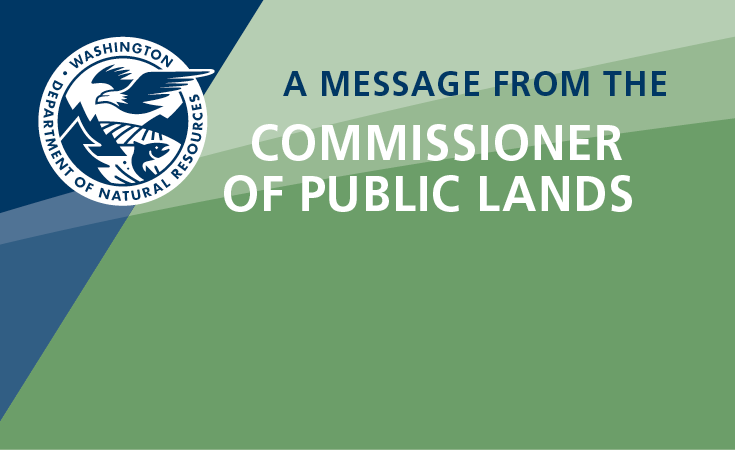Affordable Housing
DNR aims advance to housing projects on its lands to address the lack of available and affordable housing. Washington State has identified the need to build over 1 million homes in the next 20 years, which is over 50,000 new homes each year. The DNR already has a diverse commercial leasing portfolio and knows how to manage land, making housing a natural addition to the public benefit that our lands provide.
While there are many reasons behind the housing crises, the price and availability of buildable land is a key piece of the problem. By leasing our residentially zoned land for housing, DNR may be able to reduce a significant cost of building, making it more affordable for renters and homeowners. It also means more affordable home choices near schools, jobs, and transit, and more options for first-time homebuyers. Furthermore, utilizing DNR lands that are already surrounded by development and urban infrastructure can reduce sprawl into our forests and farmlands.
These residentially zoned lands currently generate little to no income for trust beneficiaries; leasing for housing will provide new revenue for our beneficiaries, including schools, libraries, and public safety. This innovation helps to address the affordable housing crisis by putting residentially zoned public lands to use in a meaningful way.
Mapping Transition Lands
Of the more than 8,000 acres across the State that DNR manages in the transition lands, approximately 3,000 of those acres are residential, in a city or urban growth area boundary, and unsuitable for DNR typical uses. These residential lands are located across the state. The Transition Lands Viewer is available to identify where sites may be available, however it is not an indication of those best suited for affordable housing.
DNR has hired a consultant to help build out an Affordable Housing Lands Portfolio, to better understand the development capacity of these sites, identify which may be best suited for affordable housing, and work with community partners to explore other potential uses on sites where affordable housing isn’t possible. That work is anticipated to be completed in late 2025.
2024 Legislative Session
DNR was successful in creating the first ever tax incentive to build affordable housing on public lands, thanks to broad bipartisan support. HB2003 amended the Leasehold Excise Tax code (RCW82.29A) to create an exemption for leases on public land when used for the placement of affordable housing. The leasehold excise tax (LET) is 12.84% of a lease rate and is only charged to private entities leasing public land.
The bill provides that if a developer commits to creating 100% affordable units for low-and-moderate income households, they are eligible to receive a LET exemption for the full duration of the lease, provided the lease is at least 20 years. Additionally, this bill requires DNR and a lessee to prioritize housing for low-income households, or those families who are in the 0-80% Area Median Income (AMI) range, when utilizing this exemption.
This exemption is intended to incentivize the placement of affordable housing on leased DNR land, and ultimately reduce the burden on low-to-moderate income households by ensuring that the 12.84% fee is not passed on to families as increased rent or mortgage fees. Local jurisdictions will receive a portion of the lease income as DNR trust beneficiaries, in addition to the economic benefits of new housing development and affordable housing in their own local communities.
What’s Next
Commissioner Franz has issued a Commissioner’s Order directing staff to explore what it will take to generate affordable housing on public land. To prepare these lands for partnerships and develop these sites, DNR needs to understand what lands would be suited for affordable housing and other creative solutions. There are three major and timely questions that need to be advanced as part of a comprehensive plan in moving this work forward, balancing the built environment with social and equity considerations and community needs.
- What is the development potential on the sites? We must understand the varying conditions that frame the potential opportunities (and challenges) on the sites. These transition lands have sat vacant for decades, and much is unknown about them. This includes zoning and density considerations, infrastructure costs and needs, and appraised value and lease rate implications.
- What are the local affordable housing goals? We must engage with the local jurisdictions, tribes, and community members to have a better understanding of the unique housing issues facing the families where our land is located. Understanding these issues will help us craft strategies and partnerships that are in line with local needs and interests, as well as with DNR’s mission and vision for our public lands.
- How can DNR prioritize its actions moving forward to optimize the impact of its land? Based on this work, DNR will prioritize sites for housing development and collaborate with partners to find creative solutions for local community housing needs.
Solving the housing crises across our state requires new partnerships and creative solutions, which is why DNR is committed to being part of the solution and leveraging public land for this public benefit.


